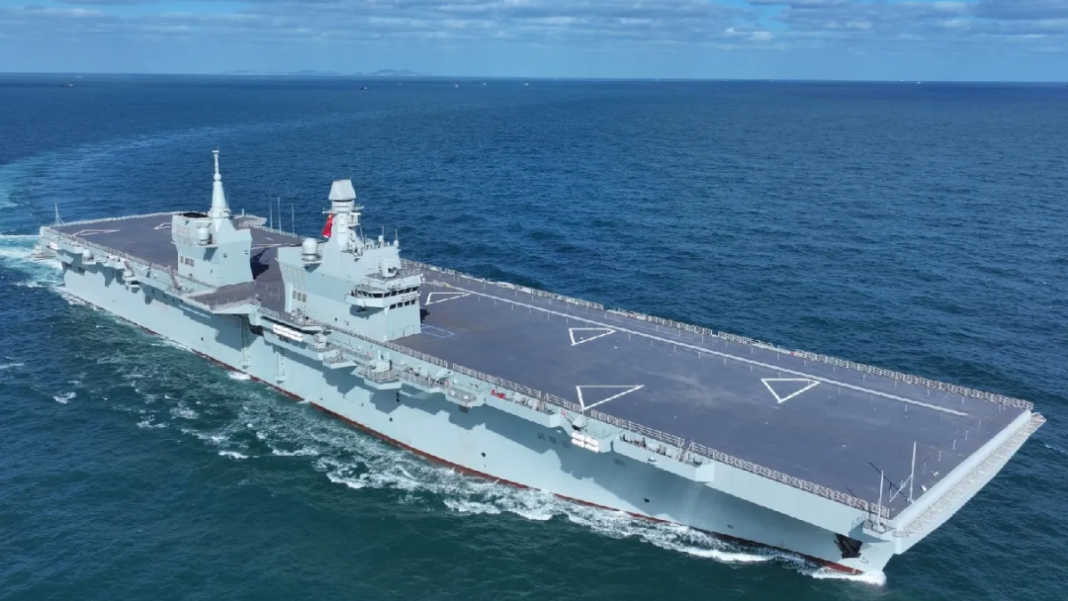Recent satellite images have revealed that China has been carrying out large-scale military exercises simulating a potential invasion of Taiwan. What makes these drills unusual is the extensive use of civilian ships. Analysts observed 12 civilian vessels, including six roll-on, roll-off car ferries and six cargo ships, participating in beach landing drills near Jiesheng in Guangdong Province. Some of these ships were seen unloading vehicles directly onto the sand using built-in ramps.
This indicates that China is actively exploring ways to move troops and equipment ashore quickly, expanding its amphibious capabilities beyond its regular military fleet. Experts note that integrating civilian vessels into military operations represents a significant shift in strategy.
Expanding Amphibious Capabilities
The exercises also featured a floating pier system, which had been spotted in previous drills in 2023. This pier system allows China to offload soldiers, vehicles, and supplies even if ports are destroyed or blocked. Such systems could enable multiple simultaneous landings, increasing the pressure on Taiwan’s defenses. Analysts point out that these drills suggest a focus on logistics, speed, and coordination, essential elements for any large-scale amphibious operation.
By practicing with civilian ships, China appears to be testing strategies for deploying troops across different locations rapidly, simulating multi-point landings that could challenge Taiwan’s defensive readiness. These developments highlight China’s commitment to improving its amphibious warfare techniques and its ability to adapt civilian infrastructure for military use.
Tokyo crosses the red line: China warns of “extremely dangerous signal” after missile shipment
Civilian Fleet Strengthens Military Power
China’s commercial shipbuilding industry is one of the largest in the world, producing more than half of global shipping capacity. The Chinese military has the legal authority to requisition civilian vessels during conflicts, providing access to significant additional transport resources. Currently, China’s amphibious fleet can carry roughly 20,000 troops in an initial assault, but using civilian ships could expand that number dramatically.
Analysts suggest that this combination of civilian and military vessels enhances China’s operational flexibility, allowing for rapid deployment of troops, vehicles, and supplies across multiple landing points. The exercises indicate careful planning and an understanding of the logistical challenges involved in large-scale amphibious operations. They also reveal China’s focus on building a robust, adaptable invasion capability capable of overwhelming defences in complex scenarios.
Responses From Taiwan and International Observers
Taiwan has closely monitored these exercises and developed contingency plans to respond to potential use of civilian ships in an attack. Some defense officials note that unarmed civilian vessels would be vulnerable to anti-ship and anti-tank weapons, while others suggest that the drills could serve as psychological operations aimed at intimidating Taiwan and its allies. International observers emphasize the need for Taiwan to maintain strong and resilient defensive capabilities. China continues to assert that Taiwan is an internal matter, while polls consistently show that the majority of Taiwan’s population opposes unification.
The satellite images and analysis of the drills demonstrate China’s growing focus on amphibious operations and innovative logistics. By combining civilian and military resources, China is testing strategies for rapid troop deployment, multi-point beach landings, and large-scale logistical coordination. The exercises provide a detailed look at how China could integrate civilian ships into military operations to expand its invasion capacity. While these drills do not signal immediate action, they reflect a serious, systematic effort to enhance amphibious warfare capabilities, showing the world the methods China could use in a potential conflict over Taiwan.
These recent exercises underline China’s ongoing preparation and its evolving approach to amphibious operations. They reveal a combination of strategic innovation, logistical planning, and military readiness, using both commercial and military resources to extend operational reach and flexibility.

